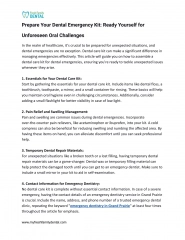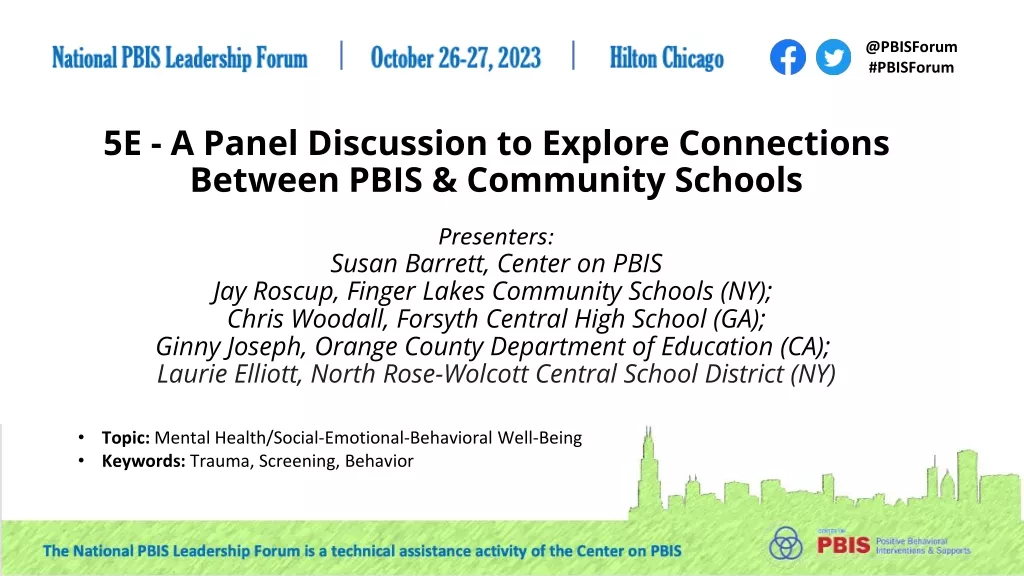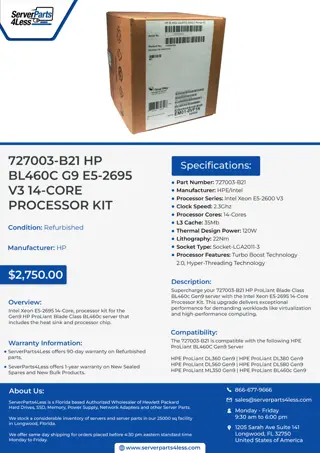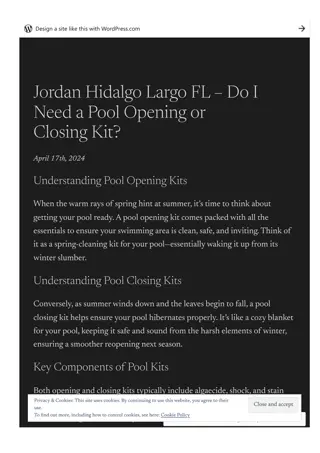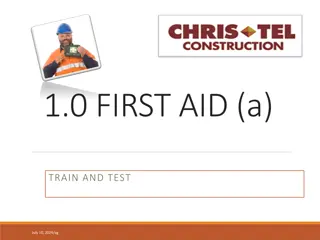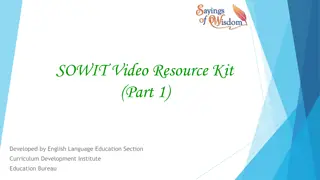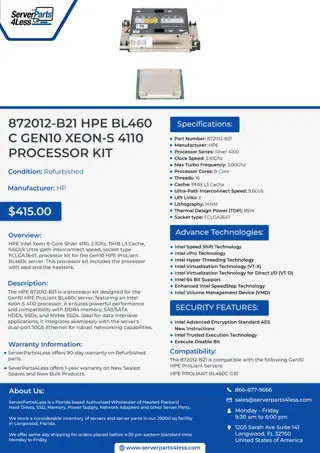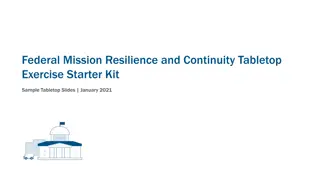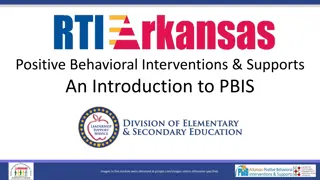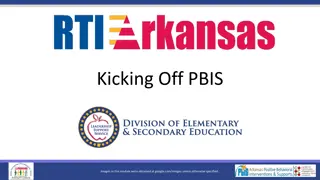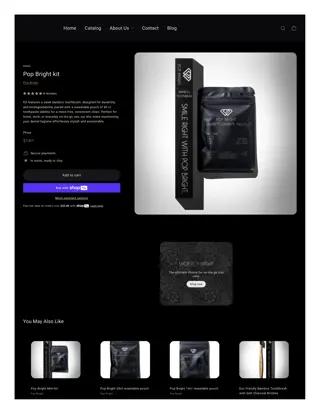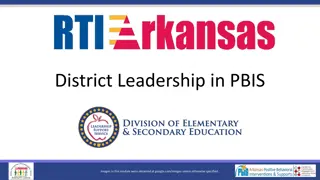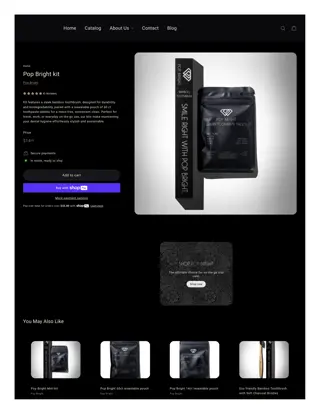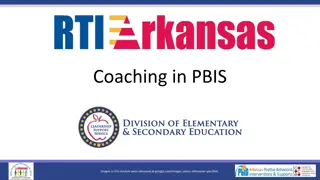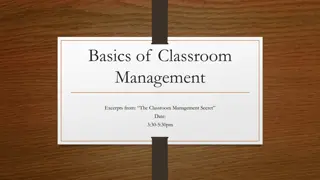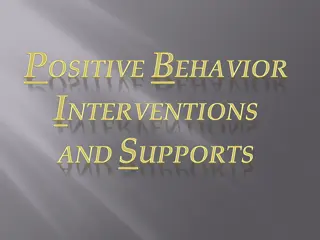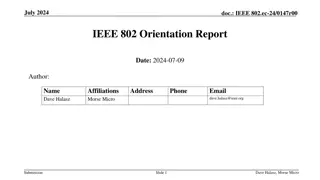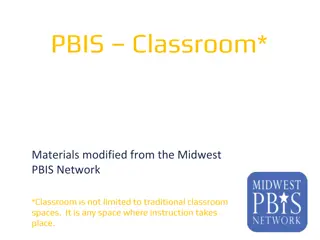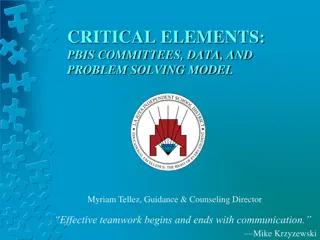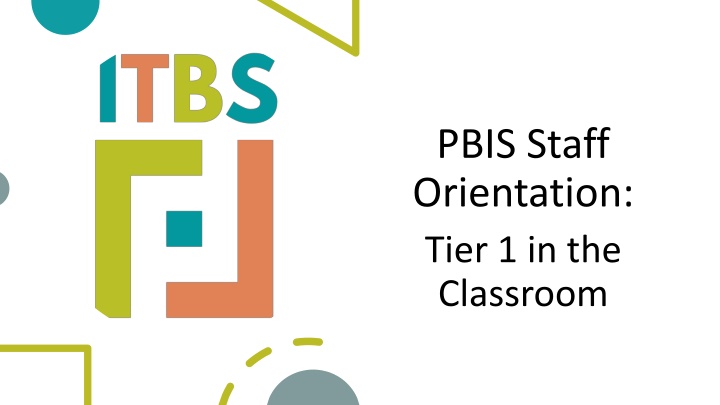
Essential Classroom Practices for Supporting Students - PBIS Training Overview
Explore essential classroom practices for supporting students through Positive Behavioral Interventions and Supports (PBIS) training. Learn how to organize the physical environment, create a positive atmosphere, establish expectations, engage students in learning, and effectively respond to behavior for a conducive learning environment.
Download Presentation

Please find below an Image/Link to download the presentation.
The content on the website is provided AS IS for your information and personal use only. It may not be sold, licensed, or shared on other websites without obtaining consent from the author. If you encounter any issues during the download, it is possible that the publisher has removed the file from their server.
You are allowed to download the files provided on this website for personal or commercial use, subject to the condition that they are used lawfully. All files are the property of their respective owners.
The content on the website is provided AS IS for your information and personal use only. It may not be sold, licensed, or shared on other websites without obtaining consent from the author.
E N D
Presentation Transcript
PBIS Staff Orientation: Tier 1 in the Classroom
Todays Agenda PBIS in the Classroom Essential Classroom Practices Wrap Up Reflect and Discuss
Our Tier 1 Team [Introduce your school s Tier 1 Team here]
[List your training expectations here] Training Expectations
PBIS in the Classroom
Typical Classroom What percentage of the school day is spent on the following activities? Direct instruction Seatwork Transitions Discipline/ other non-instructional activities 17% 33% 20% 30%
Essential Classroom Practices
Essential Classroom Practices How do we support students in the classroom? ORGANIZE the physical environment CREATE a positive atmosphere ESTABLISH expectations and routines ENGAGE students in learning RESPOND effectively to behavior
Use the Classroom Practices Self-Reflection / Observation Tool to reflect on your current classroom practices Activity
Organize The Physical Environment
Organize The Physical Environment Designate areas for specific activities Access to all learners Consider seating Easy partners All students face forward Organize teacher and student materials for easy access Post materials that support instructional efforts
Create A Positive Atmosphere
Create A Positive Atmosphere Building relationships Assuming best intentions Providing a sense of belonging Pairing yourself with positive experiences Maintaining a 4 to 1 ratio
The Power of Our Interactions Think-Pair-Share: How can this information affect how we interact with our students?
Establish Expectations And Routines
Consistency The development of clear rules and expectations for student behavior is arguably the single most important strategy because it provides clarity on the behavior that is expected. Kern & Clemens, 2007
Establish Expectations And Routines Expectations should be: Aligned to schoolwide values Positively stated Student-friendly Observable and measurable Explicitly taught Posted Teachers should use frequent pre-correction
In small groups, brainstorm as many routines as you can think of that may support the classroom environment and/or instruction Activity
Establish Expectations And Routines Is there a procedure for: Entering? Turning in homework? Transitioning to a new activity? Do students know how to: Get help? Access extra supplies? Request a bathroom break? Get a drink of water? What if: The schedule changes? There is a substitute? A student has been absent?
Engage Students in Learning
Engage Students In Learning How do you increase student engagement?
Engage Students In Learning Typical Instruction Delivery Input Input Input Effective Instruction Delivery Input Question Response Monitor Feedback
Opportunities to Respond Type Rationale Examples Action Stimulates learning through movement and discussion. This type of response can increase students' interest, attention, and enjoyment. Numbered Heads Together Show Me Four Corners Verbal Provides built-in support for reluctant learners. Students receive immediate feedback on their accuracy. Think-Pair-Share Choral Responding Look Lean Whisper Written Increases opportunities to respond for all students and improves on-task behavior Response Slates Response Cards Think-Write-Pair-Share
Stand up and find someone sitting at a different table than you, share one strategy (either action, verbal, or written) you already use and share one you would like to take into your classroom. Activity
Respond Effectively To Behavior
Respond Effectively to Behavior What does it mean to respond to behavior? An effective response to behavior is being prepared to respond to the behavior we want to see and the behavior we don t want to see
Active Supervision What do you notice about her Active Supervision? What seems effective? What tips might you suggest?
Active Supervision 5 Steps to Active Supervision 1. Move constantly and deliberately around the room 2. Visually scan the room for visual cues 3. Maintain high rates of positive contact 4. Provide behavior specific praise 5. Use redirections
Active Supervision Use active supervision to: Acknowledge the behavior we want to see Provide a continuum of consistent response strategies for contextually inappropriate behavior
Acknowledgment But don t we just want students to be intrinsically motivated?
Acknowledgment How we understand intrinsic motivation Motivation that comes from inside an individual Choosing to do something because it is the right thing to do Research definition of intrinsic motivation: Doing something because it is inherently interesting or enjoyable, with no expectation of it leading to a separate outcome Automatically maintained behavior
Acknowledgment Creating a better society for furture generations Seeing Student Success Parent and principal appreciation Paycheck
Aubrey is intrinsically motivated Acknowledgment Example: Aubrey is a student who works hard to turn assignments in on time. She follows directions the first time asked and regularly studies or works on homework in the evenings. Wants to make her parents proud Feels like a failure when she doesn t get an A Needs a 4.0 for her dream college
Kevin is intrinsically motivated Acknowledgment Example: Kevin is the star of the basketball team, he is always early for practice, is a role model for the team and frequently shoots free throws on the weekends. Self-efficacy Scholarship Social reinforcement
Acknowledgment I am making our school a better place It feels good to be successful My teachers/ peers notice me Access to desired item
Acknowledgment The way positive reinforcement is carried out is more important than the amount. B.F. Skinner
On the back of the Classroom Practices Self- Reflection / Observation Tool, reflect on how you could improve your current practices in each of the 5 areas based on the information we discussed today Activity
What are your biggest takeaways from today? What were the surprises? What are you most excited about? Any remaining concerns? Reflect & Discuss
Thank You! Any questions?

